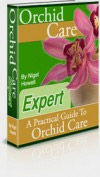Despite the fact that there are thousands of species and hybrids of orchid out there, it’s possible to break these down into two distinct orchid types. The Terrestrial Orchid and the Epiphytic Orchid.
Terrestrial Orchids
Terrestrial orchids as the name suggests are species which grow on the ground and tend to be more hardy than their epiphytic siblings. Able to thrive in more temperate climates, you can often find them in shaded woodland areas or near the coast in many countries, some even do fairly well in more urban areas.
Terrestrial orchid species are some of the most popular orchids among growers, especially new enthusiasts as they tend to be slightly easier to grow. Terrestrial orchid types or genera include Cymbidiums, Aplectrum and Calopogon.
Cymbidiums are one example of a terrestrial orchid type that includes about 40 species and thousands of hybrids. Very popular, especially with beginners because they are relatively easy to care for and will produce beautiful blooms annually. They also make up one of a number of orchid types that are semi-terrestrial, they have both underground roots and aerial roots and are equally at home on rocks and trees as they are on the ground. Their natural habitat covers South East Asia, Japan and some parts of Australia, they were also one of the first species to be cultivated.
Epiphytic Orchids
Epiphytic orchids grow on trees or rocks, usually nestling themselves in crevices, on bark or in the crooks of branches. Orchids that can grow on rocks or very stony ground are also known as Lithophytes. The term epiphytic is not exclusive to species of orchid either and is used to describe any plant species that have a root system above the ground. I should also point out that it is not the same as parasitic or symbiotic either, both terms that suggest a shared source of nutrients.
It’s the organic matter that collects between the orchids roots and branches that provides epiphytes with their nutrients. Their roots are also specially adapted to it’s natural conditions where heavy rainfall is followed by extended periods of drought. The roots are covered in an light colored layer of cells that allow allow your orchid to absorb water quickly and easily. The roots will then release the water to the rest of your orchid slowly, sustaining it during dry periods. This is why it is important not to over water your orchid and let the roots dry out completely to mimic it’s natural growing conditions.
Of all the genera or types of epiphytic orchids, Dendrobiums are probably the most well known with over 1000 different species. Like most epiphytes their natural habitats are tropical and sub-tropical regions and they thrive in warm, humid environments in areas of North India, South East Asia, Polynesia and Australia. You’ll find Dendrobiums are easy to grow, although they do require a little more care than Cymbidiums and do not flower as easily or as regularly either.
Another popular epiphytic orchid type is the Phalaenopsis. With long lasting blooms and a wide variety of colors, Phalaenopsis are one of the more common types of orchid you will find used in wedding displays.
If you spend a little time finding out about your individual orchids natural environment you’ll find it much easier to care for your orchid and understand its specific needs.

